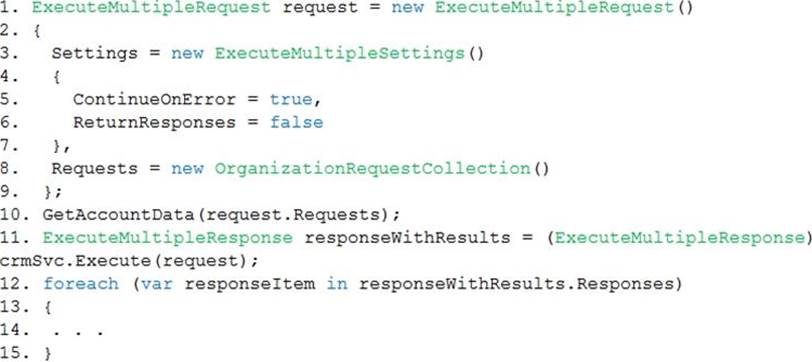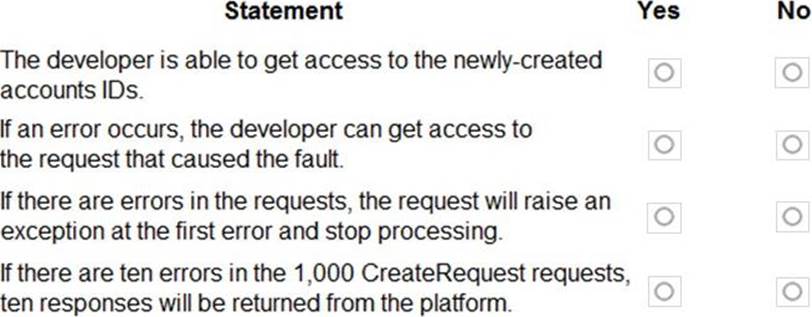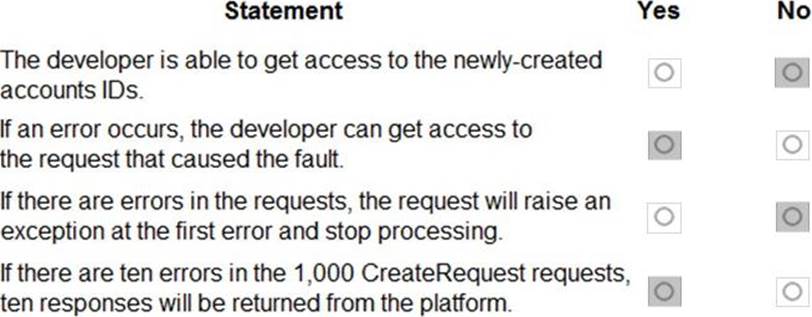- All Exams Instant Download
A company is preparing to go live with their Dynamics 365Sales solution, but first they need to migrate data from a legacy system. The company is migrating accounts in batches of 1,000
HOTSPOT
A company is preparing to go live with their Dynamics 365Sales solution, but first they need to migrate data from a legacy system. The company is migrating accounts in batches of 1,000.
When the data is saved to Dynamics 365 Sales, the IDs for the new accounts must be output to a log file.
You have the following code:

For each of the following statements, select Yes if the statement is true. Otherwise, select No.

Answer: 
Explanation:
Box 1: No
Box 2: Yes
ContinueOnError: When true, continue processing the next request in the collection even if a fault has been returned from processing the current request in the collection. When false, do not continue processing the next request.
ReturnResponses: When true, return responses from each message request processed.
When false, do not return responses.
When false, the Responses collection will not be empty if errors are returned. If errors are returned, there will be one response item in the collection for each processed request that returned a fault and Fault will be set to the actual fault that occurred.
Box 3: No
Box 4: Yes
For example, in a request collection that contains six requests where the third and fifth request return faults, the following table indicates what the Responses collection would contain.
ContinueOnError=true, ReturnResponses=false: 2 response items: 2 have Fault set to a value.
Latest PL-400 Dumps Valid Version with 171 Q&As
Latest And Valid Q&A | Instant Download | Once Fail, Full Refund
Subscribe
Login
0 Comments
Inline Feedbacks
View all comments

